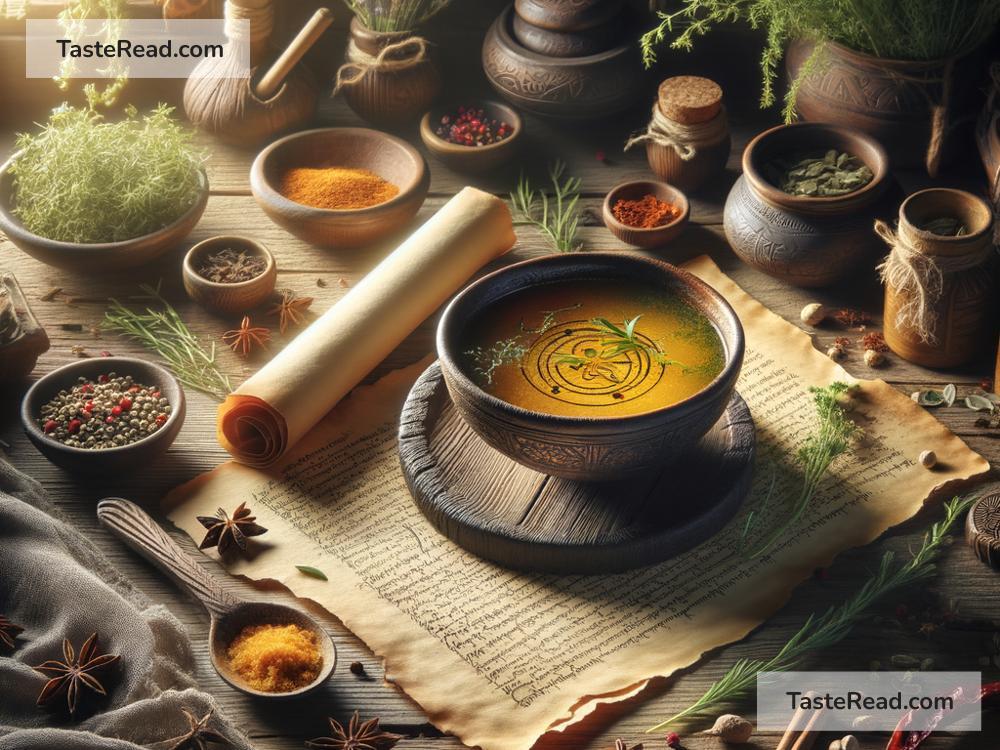The Legend of the Soup That Reveals Truths
In the heart of a quiet, ancient village surrounded by dense forests and mist-covered mountains, an unusual tale has been passed down for generations—a tale of the “Soup That Reveals Truths.” This story has fascinated countless listeners and even inspired modern-day seekers to chase its mysterious origins. But what is this soup, and why has it captured the imagination of so many?
A Curious Tale Begins
According to legend, this special soup was no ordinary dish. It was said to hold the power to show people the truths hidden deep within their hearts. Whether it was a buried secret, an unresolved inner conflict, or clarity for a tough decision, one spoonful was believed to reveal what someone needed to face—even if it wasn’t what they wanted to see.
The origins of the soup are surrounded by mystery. Some tell the story of a wise old hermit who lived alone in the woods. This hermit, known as Miru, was said to have mastered the art of listening to nature. By experimenting with wild herbs, mountain roots, and stream water purified by sunlight, Miru accidentally created the recipe for the magical soup. He began offering it to travelers who lost their way or villagers conflicted by life’s challenges.
Others say the soup was a gift from the gods themselves—a divine tool given to humans to help them understand their own flaws, strengths, and desires. Regardless of how the soup came to exist, its reputation grew far and wide.
What Made the Soup Special?
Unlike most soups, this magical concoction wasn’t about taste, though folklore describes its flavor as earthy, warm, and oddly comforting. It wasn’t the ingredients themselves but the mysterious connection the soup seemed to have with the person eating it. The legend insists that the soup contained no magic—it simply allowed the eater’s own mind and soul to uncover truths they might have been ignoring.
People who drank the soup reportedly experienced visions and emotions that guided them toward answers. For example, a merchant who feared losing everything might see an image reminding him of his family’s love, showing what truly mattered in life. A young woman unsure about marrying her fiancé might feel an overwhelming sense of joy or discomfort—the feelings hidden beneath her indecision would finally come to the surface.
A Double-Edged Revelation
While the soup brought clarity to many, the legend emphasizes that not all truths are easy to accept. A farmer who falsely accused his neighbor of stealing sheep might drink the soup and see visions of his own dishonesty. A ruler seeking power by any means might be shown faces of those hurt or betrayed in their hunger for control.
These truths didn’t break people; rather, they taught valuable lessons that could lead to growth, forgiveness, or change. But the journey wasn’t always comfortable. Self-deception, guilt, or suppressed fears sometimes caused people to resist the revelations. The legend suggests that the soup was an honest mirror—it showed what you needed to see, not what you wanted to see.
A Metaphor for Self-Reflection?
Over time, many villagers and storytellers began to wonder whether the “Soup That Reveals Truths” was ever real or simply an idea passed down to teach a deeper lesson. After all, its core message is universal: the truths we often hide from ourselves carry the keys to healing, understanding, and moving forward.
Some believe the soup represents the importance of taking time for introspection—something many of us avoid in our fast-paced world. Life’s distractions make it easy to ignore tough realities, whether about relationships, work, or personal values. But just as sitting down to eat requires a pause, so does thinking deeply about what lies within us.
Perhaps the soup wasn’t a magical potion but a physical symbol—a reminder to slow down, breathe, and look inside ourselves. Maybe Miru—the hermit in the woods—wasn’t a wizard but a wise guide who used storytelling and comforting food to help people confront their true selves.
What Can We Learn From the Legend?
At its heart, the story of the “Soup That Reveals Truths” is about courage. Facing the truth isn’t always easy; admitting faults, accepting hard facts, or making difficult choices requires bravery. But in doing so, we can grow stronger, wiser, and more fulfilled.
The legend also emphasizes simplicity. The soup didn’t require expensive or rare ingredients—it didn’t rely on grand gestures or complicated rituals. It suggests that truths are often revealed in simple moments when we’re open to them. A quiet walk, an honest conversation, or even a warm, homemade bowl of soup can help us connect with our inner thoughts and feelings.
Lastly, the story invites us to embrace self-awareness with compassion. Learning the truth about ourselves isn’t meant to bring shame or judgment; it’s an opportunity to understand, accept who we are, and strive to become better.
A World of Our Own Soup
So, while the “Soup That Reveals Truths” might remain a legend, its message remains timeless. Every person has their own “soup”—their unique process of reflection and discovery. Whether it’s journaling, meditation, or quiet contemplation over a bowl of comfort food, the lesson is clear: never shy away from the truths inside your heart. They may be hard to face at first, but they’ll lead you to a place of clarity, peace, and genuine self-growth.
And who knows? Maybe next time you sit down with a bowl of soup, you’ll find yourself wondering whether it’s the legendary recipe—and if the truths you’ve been searching for are closer than you think.


